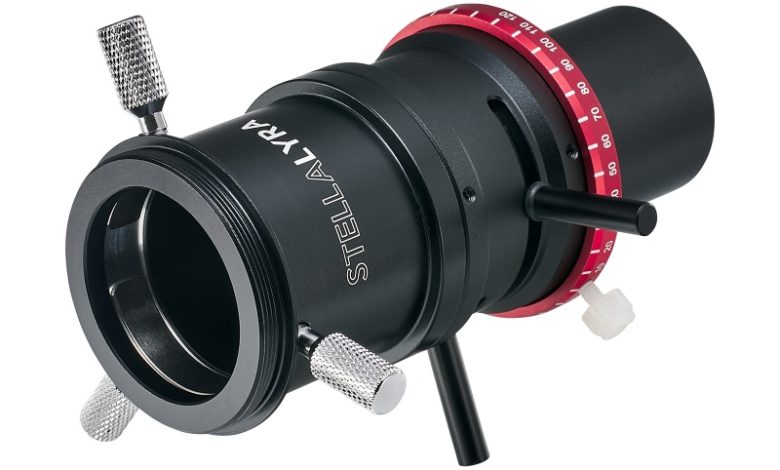
An Atmospheric Dispersion Corrector (ADC) is an essential tool for astrophotographers aiming to obtain crystal-clear images of celestial bodies. It compensates for the atmospheric dispersion effect that causes stars and planets to appear blurred or smeared in images. An ADC uses a pair of movable prisms to realign the dispersed light into a single focal point, thus sharpening the image and allowing for higher resolution captures of celestial objects.
This article of StarGazingOnline serves as a definitive guide, detailing what ADCs are, how they correct the blurring effects of Earth’s atmosphere, and the way they can be fine-tuned for optimal performance. Covering selection criteria, setup instructions, and practical usage tips, it’s a concise yet comprehensive resource for enhancing astronomical imaging, regardless of one’s experience level.
In the vast realm of astrophotography, where the cosmos unfurls its mysteries through the lens of a telescope, from the ages of 16th century pioneer in astronomy until now, the quest for clarity is paramount. Enter the Atmospheric Dispersion Corrector, or ADC for short. This ingenious device has emerged as a game-changer, ensuring that celestial images captured are as crisp and vibrant as the night sky itself.
But why the need for such a tool? Well, our planet’s atmosphere, while essential for life, poses a unique challenge for astronomers. As the ethereal light from distant stars and planets pierces through the layers of our atmosphere, it scatters and refracts, much like sunlight passing through a prism. This phenomenon, known as atmospheric dispersion, results in a subtle yet significant smearing of the celestial image, especially when observing objects near the horizon. The colors don’t align perfectly, leading to a blurred or rainbow-like effect, obscuring the intricate details that astronomers and enthusiasts yearn to capture.
So, while the universe offers us a spectacle of unparalleled beauty, our very own atmosphere acts as a veil, slightly distorting the cosmic show. The ADC, with its precise engineering, lifts this veil, allowing astrophotographers to capture the universe in all its unadulterated glory.
Overview Guide Before Start
What is an Atmospheric Dispersion Corrector used for?
An ADC is used to reduce the blurring and color fringing in astronomical images caused by the Earth's atmosphere, resulting in clearer and sharper observations of celestial objects.
How to set up an ADC for optimal results?
Align the ADC with your telescope's optical axis, adjust the prisms according to the altitude of the observed object, and fine-tune during observation for the clearest possible image.
Which brands offer the best ADCs for amateur astronomers?
Brands like ZWO, Astro Systems, and Omegon are highly regarded for producing quality ADCs suitable for amateur astronomers.
What's the difference between manual and automatic ADCs?
Manual ADCs require the user to adjust the prisms by hand, while automatic ADCs use motors and software to adjust the prisms based on the telescope's pointing data.
Can ADCs be used for daytime terrestrial photography?
ADCs are primarily designed for astronomical use and are not typically used for daytime terrestrial photography, as atmospheric dispersion is less noticeable at shorter distances.
How to choose the best ADC for my telescope?
Consider the size and focal length of your telescope, the specific conditions you'll be observing in, and compatibility with your existing setup. Also, read reviews and seek recommendations from the astrophotography community.

What is Atmospheric Dispersion
Before talking about Atmospheric Dispersion Corrector or ADC, let’s know where the problem goes from. Atmospheric dispersion might sound like a term plucked from the annals of high-end physics. Still, its essence touches every stargazer and astrophotographer. So, what exactly is it? In its simplest form, atmospheric dispersion refers to the way our atmosphere bends and spreads the light from celestial bodies as it journeys through the various layers of gases enveloping our planet.
Imagine gazing at a distant star. The light from that star, after traveling unfathomable distances across the void of space, finally reaches Earth. But its journey is not over. As it enters our atmosphere, this light encounters molecules and particles that cause it to refract or bend. Different colors (or wavelengths) of light bend by slightly different amounts. This differential bending causes the star’s image to spread out into a tiny spectrum, with blue light refracted more than red. The result? A celestial object that should appear as a single point of light might instead manifest as a small rainbow, especially when it’s near the horizon.
The science behind this is rooted in the principles of refraction. Just as a prism disperses a beam of sunlight into its constituent colors, our atmosphere acts as a natural prism. The density of the atmosphere changes with altitude. Since light travels at different speeds through varying densities, it bends differently as it passes through. This bending is more pronounced for light rays that enter the atmosphere at a shallow angle, which is why atmospheric dispersion is most noticeable for celestial objects close to the horizon.
For astronomers, this dispersion can be both a marvel and a menace. While it’s responsible for some of the sky’s natural wonders, like the vivid colors of a setting sun, it also poses challenges, especially when precision and clarity are the goals. Hence, understanding and countering atmospheric dispersion becomes pivotal for those keen on capturing the cosmos in its truest form.

What the difference between Atmospheric Dispersion and aberration (chromatic and optical aberration)?
Atmospheric Dispersion refers to the spreading out of light into its component colors as it passes through Earth’s atmosphere. This effect is similar to how a prism separates white light into a spectrum of colors. In astronomy, this causes stars and planets to appear as if they have colorful edges, especially when they are close to the horizon where the atmosphere is thickest.
Chromatic Aberration is a type of optical aberration that occurs when a lens fails to focus all colors to the same convergence point. It happens because lenses have different refractive indices for different wavelengths of light, resulting in a rainbow of colors around the edges of images.
Optical Aberration, more broadly, refers to imperfections in the image formed by a lens or a mirror. This includes a variety of effects such as spherical aberration, where light rays striking the outer edges of a lens or mirror are not focused to the same point as those hitting the center, and astigmatism, where images at different orientations are focused at different distances.
In summary, atmospheric dispersion is a natural phenomenon caused by the Earth’s atmosphere, while chromatic and optical aberrations are imperfections in the imaging performance of optical systems.
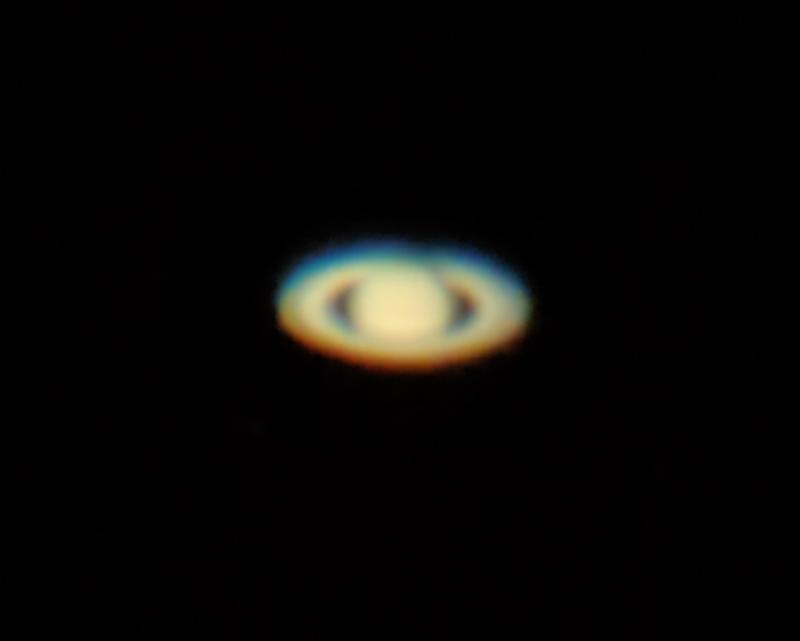
The Birth and history of ADCs or Atmospheric Dispersion Correctors
The annals of astronomy are replete with tales of innovation, of brilliant minds confronting the cosmos’s challenges and devising tools to further our understanding. Among these tales is the birth of the Atmospheric Dispersion Corrector, or ADC.
Historically, as telescopes grew more sophisticated and the pursuit of clearer celestial images became an obsession, the issue of atmospheric dispersion became glaringly evident. Early astronomers, while marveling at the wonders of the night sky, were often vexed by the rainbow-like smear on their observations, especially of objects near the horizon. The universe was offering a spectacle, but our atmosphere, in all its protective glory, was inadvertently distorting the view.
The need for a solution was palpable. While the phenomenon of atmospheric dispersion was understood, countering its effects was no small feat. It required a tool that could, in essence, reverse the dispersion, realigning the scattered light into a coherent image.
Enter the ADC. The initial iterations were rudimentary, often employing single prisms or lenses. But as the understanding of atmospheric dispersion deepened, so did the complexity and efficiency of ADCs. Over the years, these devices evolved, incorporating double-prism arrangements and sophisticated materials to maximize their corrective capabilities.
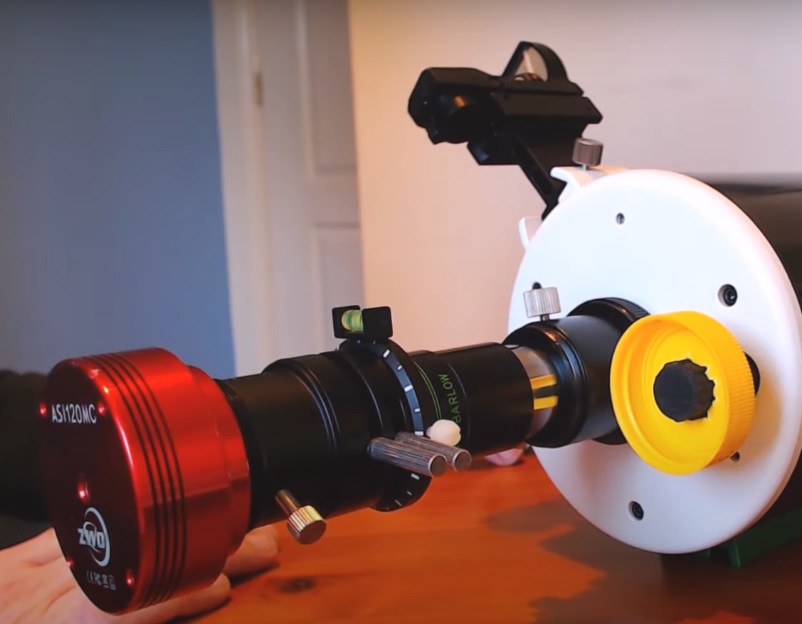
From the observatories of yesteryears to the state-of-the-art setups of today, ADCs have journeyed from being a novel solution to an indispensable tool. Their evolution is a testament to humanity’s relentless pursuit of clarity, of our desire to see the universe as it truly is, unfiltered and unobscured.
How ADCs Work
Peeling back the layers of an Atmospheric Dispersion Corrector reveals a symphony of optics and precision engineering, all working in tandem to deliver clarity to celestial observations. But how do these devices, seemingly simple in design, achieve such a monumental task? Let’s delve into the mechanics of ADCs.
The Principle of Operations of Atmospheric Dispersion Corrector
At its core, an ADC operates on a principle that’s both elegant and ingenious: counteract the dispersion caused by the atmosphere by introducing an opposite dispersion. In essence, if the atmosphere scatters the light of a star into a tiny spectrum, the ADC’s job is to realign this spectrum back into a singular point of light.
Before-and-After Image Comparisons to Showcase the Effectiveness of ADCs
Images speak louder than words. Showcasing a series of before-and-after shots can vividly illustrate the transformative power of ADCs. These comparisons can highlight the clarity, color accuracy, and detail enhancement that ADCs bring to the table.
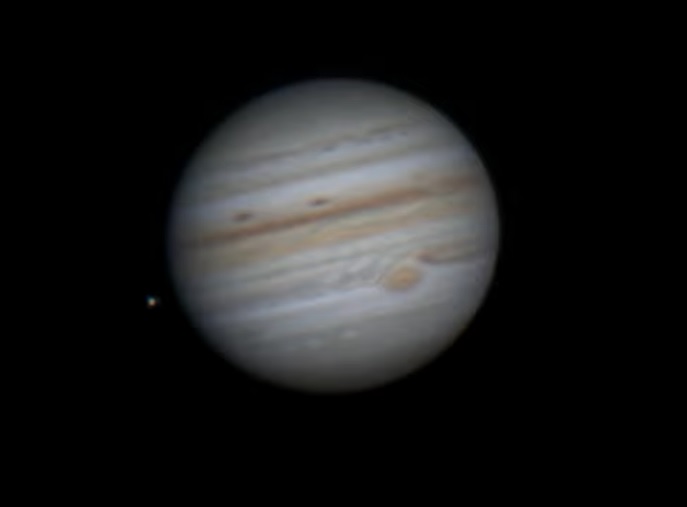

The Role of Prisms in ADC or Atmospheric Dispersion Correctors
Prisms are the heart and soul of an ADC. These transparent optical elements refract or bend light. When light enters a prism, it slows down and bends. As it exits, it speeds up and bends again. Different colors (or wavelengths) of light bend by slightly different amounts, a phenomenon we see in action when a prism creates a rainbow from a beam of sunlight. In an ADC, prisms are used not to create a spectrum but to realign one.
What is Atmospheric Dispersion and what ADC does?
Double-Prism Arrangement and Its Benefits:
Modern ADCs typically employ a double-prism arrangement. These two prisms can rotate relative to each other. When aligned in a certain way, they introduce a dispersion that’s opposite to the one caused by the atmosphere. By adjusting the relative positions of these prisms, astronomers can fine-tune the amount of correction introduced by the ADC. This double-prism setup offers a level of precision and flexibility that’s crucial for astrophotography, allowing for optimal image clarity regardless of the celestial object’s position in the sky.
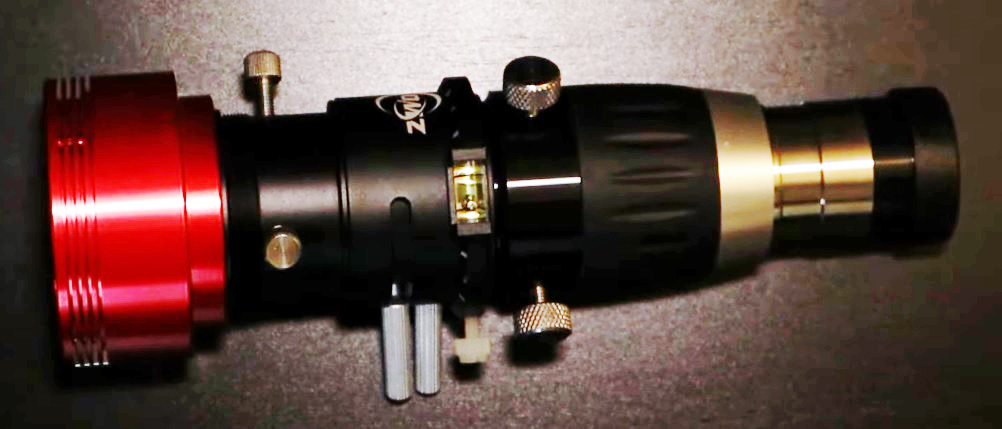
Types of Atmospheric Dispersion Correctors or ADCs:
The world of Atmospheric Dispersion Correctors is as varied as the celestial wonders they help capture. Over the years, as technology has advanced and the needs of astronomers have evolved, a plethora of ADCs have emerged, each with its unique features and functionalities. Let’s navigate through the diverse landscape of ADCs.
Manual vs. Automatic ADCs
Manual ADCs: These are the traditional ADCs where the user manually adjusts the prisms to counteract atmospheric dispersion. They require a hands-on approach, with the astronomer observing the effects in real time and making adjustments accordingly. While they might seem rudimentary, manual ADCs offer a tactile experience. They are often preferred by purists who enjoy the process of fine-tuning their equipment.
Automatic ADCs: The newer generation of ADCs, these devices are equipped with sensors and software that automatically adjust the prisms based on the observed dispersion. They take the guesswork out of the equation, ensuring optimal correction without the need for constant manual adjustments. Ideal for those who prioritize convenience and precision, automatic ADCs represent the fusion of traditional astronomy with modern technology.

Popular Brands and Models of Atmospheric Dispersion Corrector
- ZWO: A renowned name in the astrophotography community, ZWO offers ADCs that are both efficient and user-friendly. Their models, like the ZWO ADC Mark II, are lauded for their precision and build quality.
- Omegon: Another heavyweight in the field, Omegon’s ADCs are known for their robustness and clarity. Their products are often recommended for both amateur astronomers and seasoned professionals.
- Astro Systems Holland: With a focus on high-quality optics, ASH’s ADCs stand out for their meticulous engineering and performance.
Features to Consider When Choosing an ADC
- Material of Prisms: The type of glass or material used in the prisms plays a pivotal role in the ADC’s performance. High-quality materials like BK7 or H-K9L ensure minimal light loss and optimal correction.
- Adjustability: The ease with which you can adjust the prisms, either manually or automatically, can make a significant difference in your observational experience.
- Size and Compatibility: Depending on your telescope setup, you’ll want to ensure that the ADC fits seamlessly. Whether it’s compatible with 1.25″ eyepieces or has T2 connections can influence your choice.
- Coating: The coating on the prisms affects light transmission. Multi-coated prisms offer better light transmission, ensuring brighter and clearer images.
- Build Quality: A robust build ensures durability and longevity. Given that ADCs are often exposed to outdoor conditions, a sturdy construction is essential.
Choosing the right ADC boils down to understanding your requirements and preferences. Whether you’re a hobbyist looking to enhance your lunar observations or a professional capturing the intricate details of distant planets, there’s an ADC out there tailored to your needs. The key is to stay informed, compare features, and, most importantly, never stop reaching for the stars.
Practical Application of ADCs and how to set up an ADC
The magic of an Atmospheric Dispersion Corrector lies not just in its design but in its application. When set up and used correctly, an ADC can transform your astronomical observations, offering clarity that was previously elusive. Let’s delve into the practicalities of using an ADC.
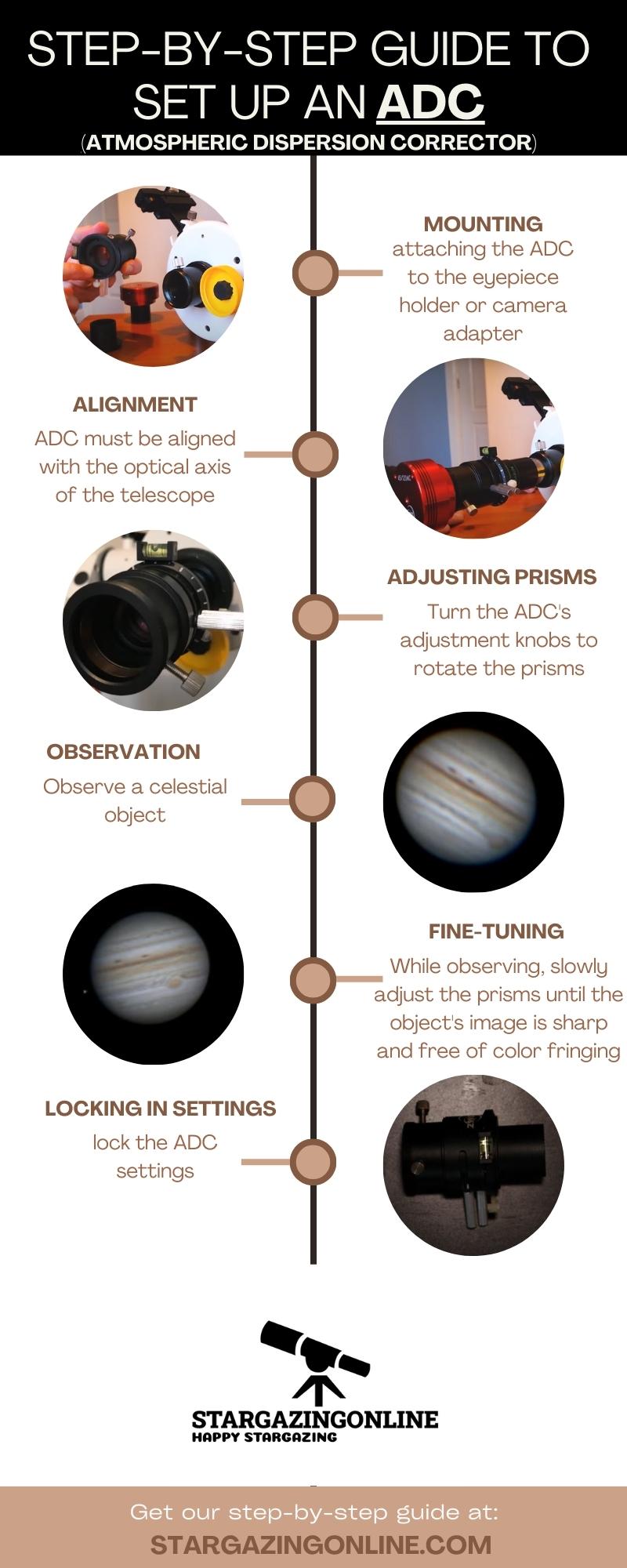
Step-by-step Guide to Set up an ADC
- Mounting: Begin by attaching the ADC to the eyepiece holder or camera adapter of your telescope.
- Alignment: Ensure that the ADC is aligned with the optical axis of the telescope. This can be verified by observing a bright star and ensuring it remains centered as you rotate the ADC.
- Adjusting Prisms: Turn the ADC’s adjustment knobs to rotate the prisms. Start with a neutral position where the prisms are parallel.
- Observation: Observe a celestial object, preferably one near the horizon where atmospheric dispersion is most pronounced.
- Fine-tuning: While observing, slowly adjust the prisms until the object’s image is sharp and free of color fringing.
- Locking in Settings: Once optimal clarity is achieved, lock the ADC settings if your model has this feature.
Aligning and Setting Up an ADC
Importance of the F-ratio and ADC’s Location in the Optical Path
The F-ratio, or focal ratio, of your telescope, plays a crucial role in the effectiveness of the ADC. A telescope with a smaller F-ratio (faster optics) may require more correction from the ADC. Additionally, the ADC’s position in the optical path can influence its performance. Ideally, it should be placed as close as possible to the eyepiece or camera to maximize its corrective capabilities.
Determining the Most Suitable Prism Settings in Atmospheric Dispersion Correctors
The optimal prism settings depend on several factors, including the celestial object’s altitude, the telescope’s F-ratio, and the current atmospheric conditions. Regular observation and practice will help you intuitively find the best settings for any given scenario.
Tips for Achieving Optimal Results with ADCs
- Regular Calibration: Periodically calibrate your ADC, especially if you’ve changed observation locations.
- Observe at Optimal Times: Atmospheric dispersion is less pronounced when observing objects higher in the sky. Plan your sessions accordingly.
- Stay Updated: As with all astronomical equipment, advancements are continuous. Stay updated with the latest techniques and best practices for using ADCs.
ADCs in Different Astronomical Settings
ADCs, with their versatility, find applications in various astronomical settings, from backyard stargazing sessions to professional observatories.
Using ADCs for Planetary Imaging
Planetary imaging, with its focus on capturing intricate details, benefits immensely from ADCs. Whether it’s the bands of Jupiter or the rings of Saturn, ADCs ensure that the images are sharp, vibrant, and free from atmospheric distortions.
Benefits of Deep-Sky Imaging
While ADCs are primarily associated with planetary imaging, they also offer advantages for deep-sky imaging. Objects like nebulae and galaxies, when observed near the horizon, can benefit from the corrective capabilities of ADCs, resulting in clearer and more detailed images.

ADCs in Professional Observatories vs. Amateur Setups
Professional Observatories: In these settings, ADCs are often integrated into advanced imaging systems, working in tandem with other corrective optics and software to produce the best possible images. The focus here is on precision, with ADCs often being automated and calibrated for specific telescopes.
Amateur Setups: For hobbyists and amateur astronomers, ADCs offer a cost-effective way to enhance observations. While the setups might be less complex than professional observatories, the results, especially with a well-tuned ADC, can be astonishingly good.
In both settings, the core principle remains the same: counteracting the effects of atmospheric dispersion to capture the cosmos in all its glory. Whether you’re a seasoned astronomer with a state-of-the-art observatory or a beginner with a passion for the stars, ADCs are tools that can elevate your astronomical journey.
Want to know more about Atmospheric Dispersion Corrector?
- The Relationship Between Atmospheric Dispersion and Altitude
Atmospheric dispersion is intrinsically linked to altitude. As a celestial object rises in the sky, its light passes through less of Earth’s atmosphere, reducing the effects of dispersion. Conversely, objects near the horizon traverse a thicker atmospheric layer, intensifying the dispersion. This relationship is crucial for astronomers, as it dictates the amount of correction an ADC needs to provide based on the object’s position in the sky.
- The Impact of ADCs on Color Balance and Image Quality
While ADCs are designed to correct color fringing, they can also influence the overall color balance of an image. When used correctly, ADCs enhance image quality by ensuring each color channel aligns perfectly. However, if not calibrated correctly, they might introduce subtle color shifts. It’s essential to regularly check and adjust the ADC settings to maintain optimal color balance.
- Troubleshooting Common Issues with ADCs
- Blurred Images: Ensure the ADC is correctly aligned with the telescope’s optical axis.
- Persistent Color Fringing: Check the prism settings and recalibrate the ADC.
- Difficulty in Adjusting Prisms: Ensure the ADC’s moving parts are clean and free from obstructions.
Final words
Astrophotography is a dance between Earth and the cosmos, a delicate balance of capturing distant wonders while contending with our atmosphere’s challenges. ADCs, in this dance, play a pivotal role. They ensure that the images we capture, whether of distant galaxies or neighboring planets, are as true to the universe’s beauty as possible. As we continue our celestial journey, ADCs stand as a testament to human ingenuity. This tool not only corrects but also connects us deeper with the cosmos. For every aspiring astrophotographer, the invitation is clear: embrace ADCs, explore the skies, and let the universe unveil its wonders.




Fantastic site. A lot of helpful info here. I’m sending it to some buddies ans additionally sharing in delicious. And naturally, thanks on your sweat!
Thank you for your good feeling